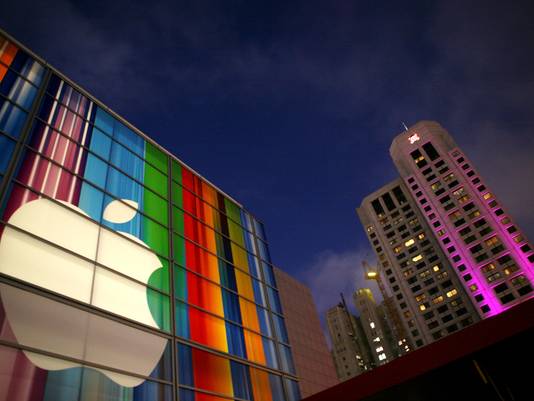New Tech Economy: Apple CEO faces challenge winning back skeptics
SAN FRANCISCO — When Apple reports quarterly results on Tuesday, big money managers and Wall Street analysts who are still bullish on the company will be sifting through the numbers, looking for signs of hope that the long and painful drop in its share price may be over.
When the once most valuable company in the world suffers a 40% haircut, such divination can take on the scope of a cottage industry.
But retail investors considering whether to buy, sell or hold the stock might do better to screen out that noise and focus on a factor that's just as important to Apple's stock price as the company's revenue and profit trajectories — namely, investor psychology.
That's because nothing that CEO Tim Cook or other Apple executives say about iPhones, iPads or a possible smart watch can change one important fact: The type of investors who pushed Apple shares to $700 last year have grown more than skeptical of the company's growth prospects.
The evidence for that goes beyond the obvious defection of growth investors from the stock, which we wrote about in a January column, one that also explained why Apple's foray into China wasn't going to live up to investor hopes[1].
Since then, the stock has fallen further, and the company's problems in China have broadened beyond profit-margin concerns to include attacks on Apple's reputation by that country's state-run media.
Last week, a disappointing revenue forecast from Apple chip supplier Cirrus Logic pushed the shares down more than 5%.
The spike in volume that accompanied the share-price drop shows why Apple has become a favorite of short-sellers: Any bad news about Apple's fundamentals has become an excuse to sell first and ask questions later.

John Shinal is a technology columnist covering high-tech stocks.(Photo: USA TODAY)
It doesn't help that technical charts mapping the company's stock price strongly support the bearish case, because the 100-day moving average that long supported Apple's share rise is now serving as a barrier of resistance.
A look at a long-term Apple chart — over three or five years, for example — is also useful in understanding why Apple's stock bears little resemblance to the one that stopped rising last fall.
When the chart line showing the steady, multi-year rise in Apple's share price took on the trajectory of a rocket ship in the first quarter of last year, it was a sure sign of the presence of momentum investors.
Short-term traders of that type are not sentimental types, and not the type of stock buyers who will give Cook more time to make them money just because he went to China in hopes of improving working conditions there for workers at Apple suppliers' factories.
This is why the argument now common among Apple bulls — that the company is a great value play based on its earnings estimates and stock price — is about as useful to retail investors as the ridiculous predictions made by many of those same bulls last year that Apple would rise to $1,000 a share.
Apple is a great value play, but only if you buy into the current earnings estimates of Wall Street analysts and like to buy tech stocks for their dividend potential rather than their growth prospects.
But that's not an argument against further price declines in Apple shares, because the sharp drop on heavy volume caused by the Cirrus Logic warning shows that there are still growth investors who can be shaken out of the stock en masse.
Even if Apple's numbers are better than expected and the stock gets a short-term bounce, the type of skepticism now prevalent on Wall Street regarding the company usually takes several quarters to fade.
It's easy to hate a stock that's taken a big chunk out of your portfolio during the last eight months.
Apple is expected to report its first year-over-year profit decline in a decade, and that type of news doesn't fade easily from memory.
Once the company reports earnings, all of the near-term bearish news on the company will be priced into its shares — especially now that Samsung has given a timetable for rolling out its new Galaxy S4 smartphone.
Both events are likely to confirm the fears that prompted savvy growth investors to start selling last September, namely that Apple is facing much-tougher competition from smartphone rivals on both price and features.
While it's often true that the best time to buy a stock — or the worst time to sell it — is when sentiment is most bearish, the preponderance of bullishness among Apple analysts suggests that capitulation point has yet to be reached.
Even if Apple were to provide a forecast that signals a return to profit growth later this year, and the stock gets a short-term bounce, it will take several quarters of positive results for Cook to win back skeptics.
Unless that happens, and until it does, growth investors should be skeptical of anyone trying to call a bottom in Apple's share price.
John Shinal has covered tech and financial markets for 15 years at Bloomberg Businessweek, San Francisco Chronicle, Dow Jones MarketWatch, Wall Street Journal Digital Network and others.










